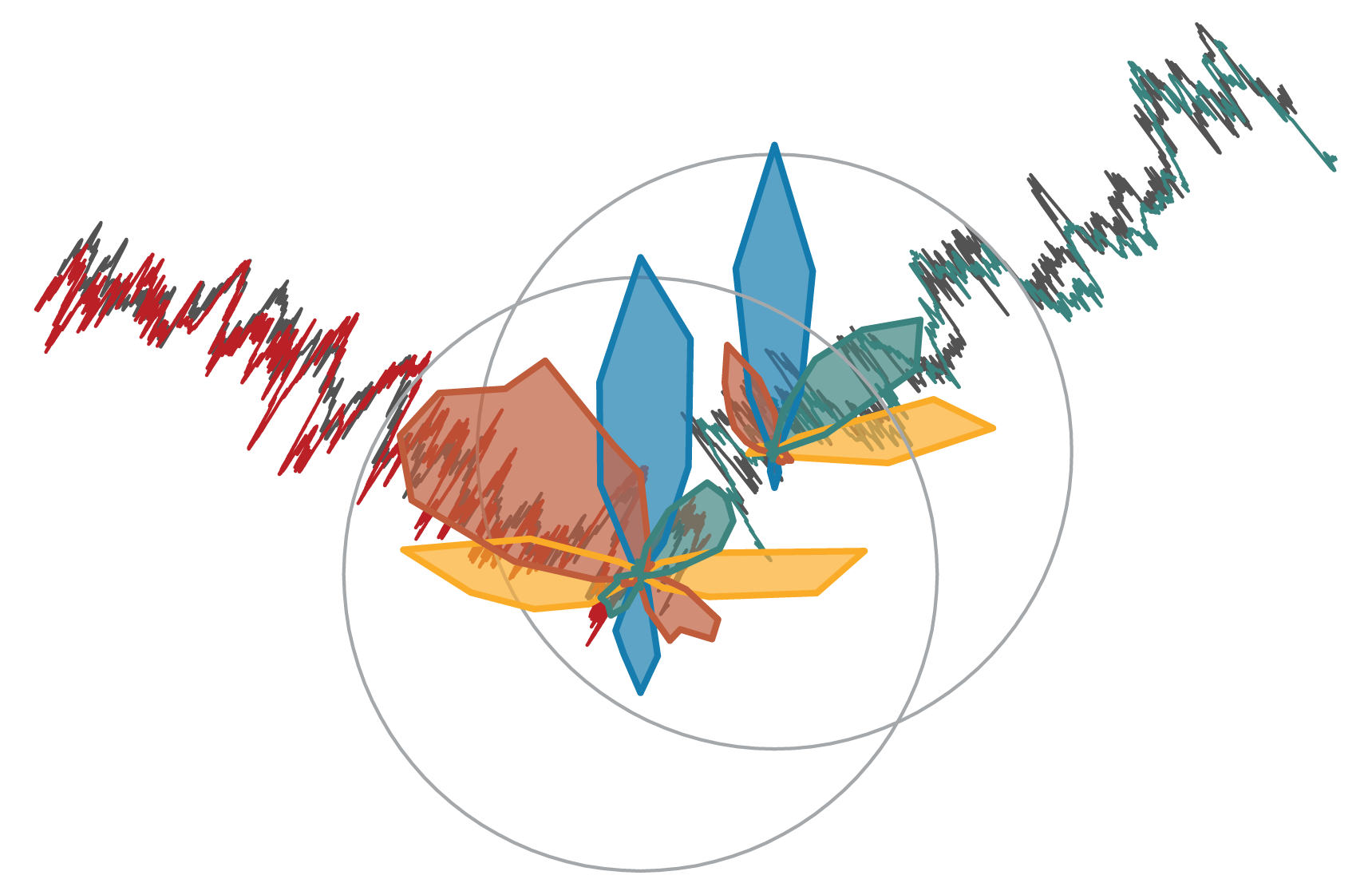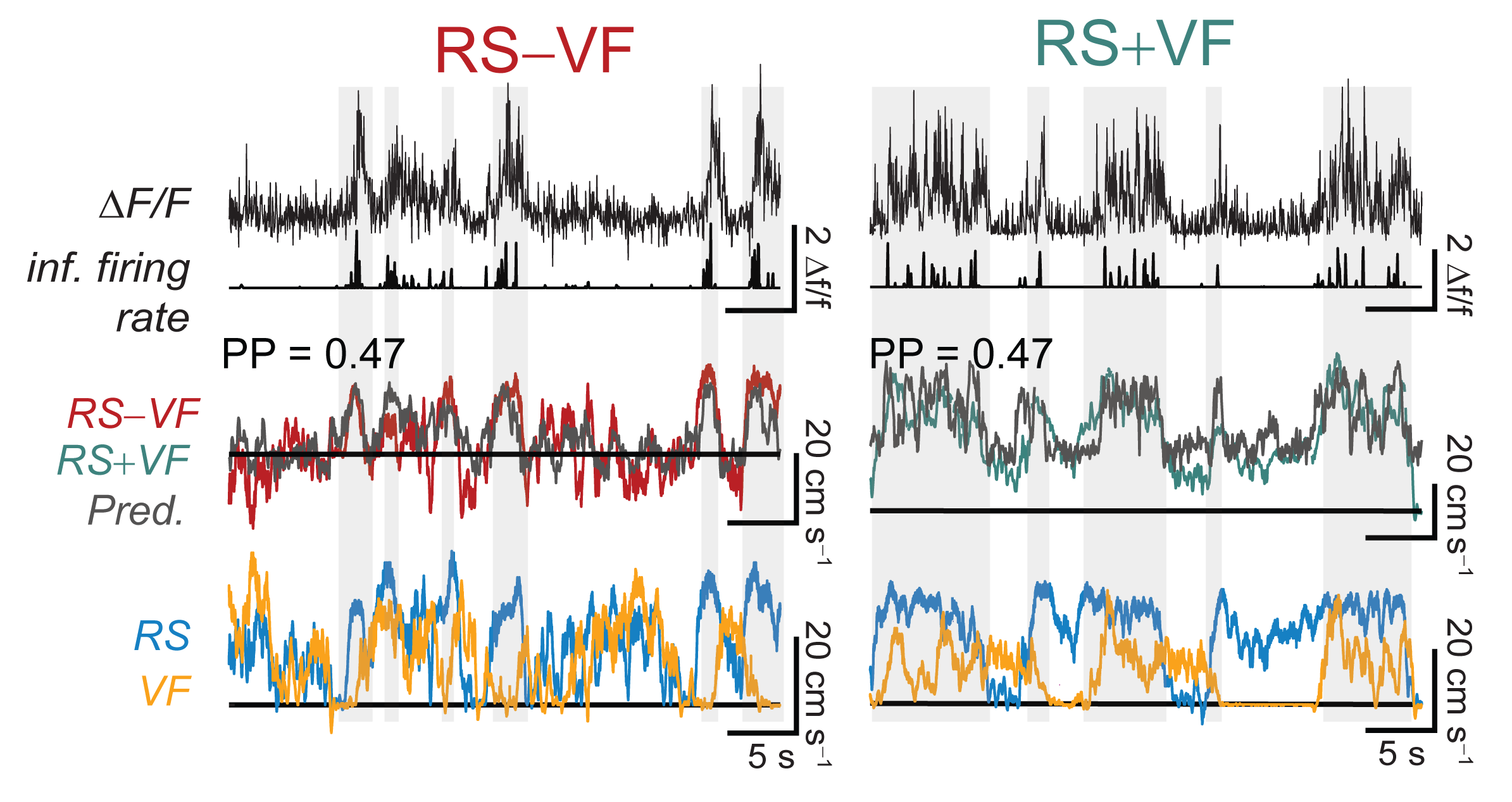Information in thalamic input to visual cortex
Comparing and quantifying the information passed from two thalamic pathways into V1
1st February, 2016
Figure 1

Figure 1
Figure 2: Decoding of visuo-motor variables

Figure 2: Decoding of visuo-motor variables
Figure 3

Figure 3
The pulvinar is a complex of higher-order visual nuclei in the thalamus. It is heavily interconnected with many cortical and subcortical areas, and has been shown to exert strong influence on visual cortical activity. The pulvinar may be important for attentional gating of visual information and integration of visual and behavioral information, but knowledge about its function is still very limited. In particular, it is unknown what type of information this thalamic hub conveys to different cortical areas.
The homologue of the pulvinar in the mouse is the lateral posterior nucleus (LP). We quantified information conveyed by LP to visual cortex, and compared it to the information arising from the dorsolateral geniculate nucleus (dLGN), the first-order visual thalamic nucleus that receives its primary input from the eye.
By using in vivo two-photon imaging of axons labelled with genetically-encoded calcium indicators, we recorded responses of thalamic axon terminals from LP or dLGN in layer 1 of mouse visual cortex (Figure 1). During imaging, head-fixed mice were free to run either in the dark or through a simple virtual corridor with variable visual patterns on the walls. In some sessions, the visual stimulus was uncoupled from the animals’ locomotion to separate the visual from motor signals, to examine the role of thalamo-cortical interactions in sensory-motor integration. Using non-linear information-based methods, we measured the presence of information concerning various sensory- and motor-related variables in the activity of individual thalamic boutons projecting to V1 (Figure 2).
We found that both LP and dLGN transmit a wide range of sensory, behavioral and contextual signals to layer 1 of visual cortex (Figure 3). Both dLGN and LP boutons carried information about the animals’ running speed as well as visual flow speed within the virtual corridor. However, LP boutons carried prominent signals representing discrepancies between expected and actual optic flow during locomotion. These results suggest that while both LP and dLGN are engaged in sensory-motor integration, LP may play a role in enabling animals to differentiate between self-generated and external visual motion.
In summary, we found that layer 1 of visual cortex receives diverse contextual information from the higher order thalamic nucleus LP, including purely visual, purely motor, and combined sensory-motor interaction signals.
Publications
This work was published in Nature Neuroscience: MM Roth, J Dahmen, DR Muir, F Imhof, FJ Martini, SB Hofer. 2016. Thalamic nuclei convey diverse contextual information to layer 1 of visual cortex, Nature Neuroscience 19:299–307. DOI: 10.1038/nn.4197.
News and Views: Life goes by: a visual circuit signals perceptual-motor mismatch. N Ishiko and AD Huberman. 2016. Nature Neuroscience 19:177–179.